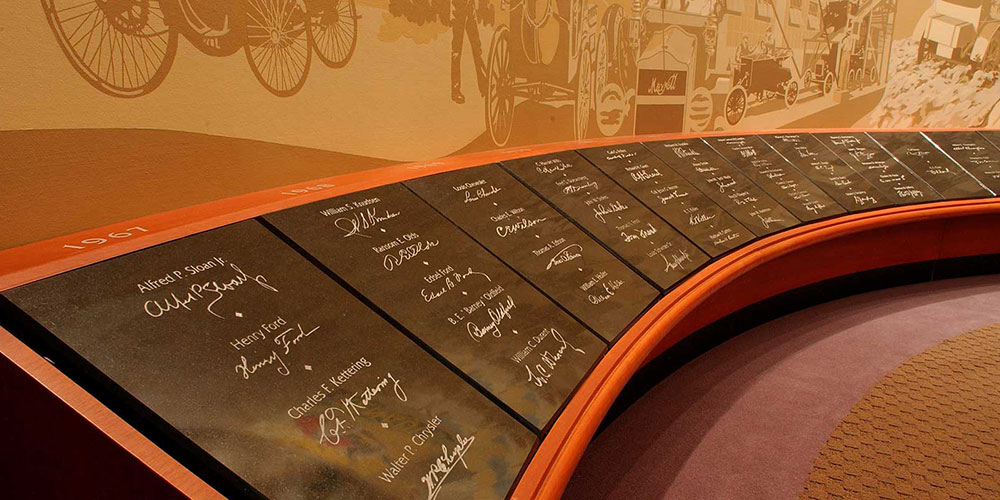By Robert Tate, Automotive Historian and Researcher
Images courtesy of Robert Tate's Collection
Posted: 05.16.2018
During the early years of the American automobile industry, there was a manufacturing plant in Jackson, Michigan for the New York City-based Briscoe Motor Corporation, which produced cars between 1914 and 1921. The company made its debut near its corporate office at the New York Automobile Show in January 1914. The Briscoe automobiles were powered by a four-cylinder L-head engine that produced 33 horsepower and offered a medium to high price tag.
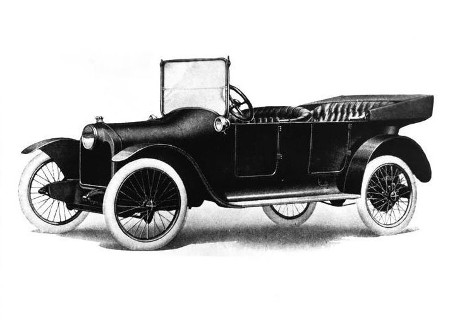 1915 Briscoe with the cyclops headlight
1915 Briscoe with the cyclops headlight
The Briscoe was a very light car, except for the cyclops headlight design that stared out of the radiator grille. For many consumers at the time, the car was new, and most people had never heard of the Briscoe Motor Corporation. The car was named for Benjamin Briscoe, who was born in Detroit and an automotive pioneer and industrialist. In 1904, Briscoe joined with Jonathan Maxwell to manufacture the Maxwell-Briscoe automobile. In 1914 and 1915, the Briscoe automobile offered the consumer a four-cylinder engine and a lightweight body made of a composition paper mache material.
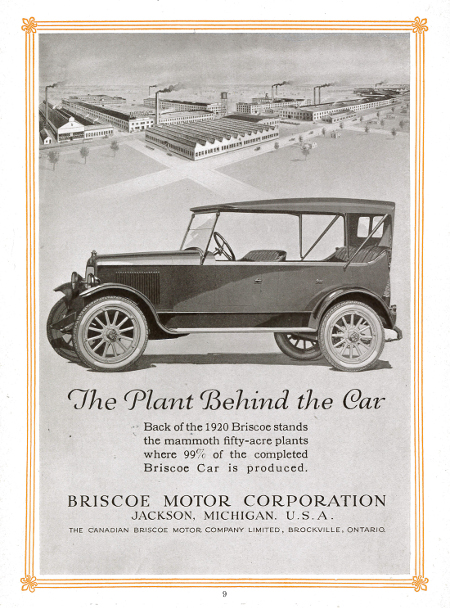 Ad for the 1920 Briscoe
Ad for the 1920 Briscoe
During the 1920s, the new Briscoe sedan was an automobile that consumers could drive in good or bad weather, winter or summer. It was the ideal car. The Briscoe sedan was truly the all-family car that some consumers really liked. The interior was manufactured with mohair velvet upholstery, along with soft-glow cut glass and a dome light for late night driving.
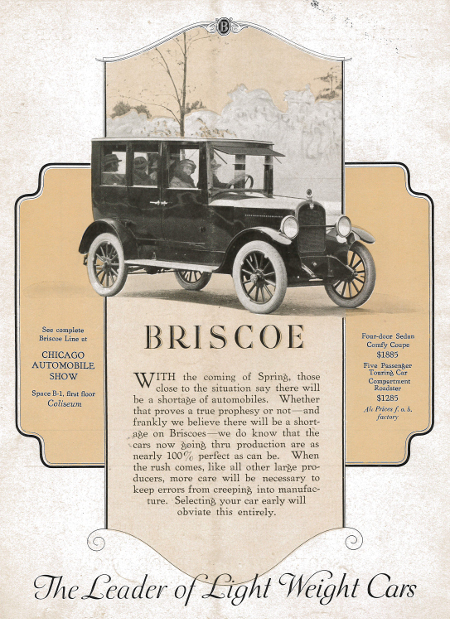 An ad for the Briscoe four-door sedan
An ad for the Briscoe four-door sedan
Briscoe also made a coupe. The body lines of the coupe were distinct, but perhaps the greatest improvement over all previous coupes was the interior design that most families really enjoyed.
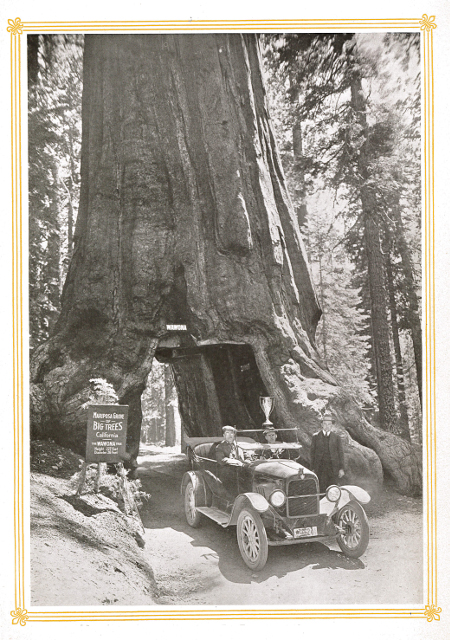
Briscoe advertising called the automobile “The Leader of Light Weight Cars.” Road signs were also used in promoting the Briscoe automobile. The signs were eight feet wide by four feet high and constructed of strong sheet steel with reinforced backs and plated edges. The cost of the road signs was $ 9.50 each. The Briscoe advertising team was managed by Waring Sherwood and Eric B. Flippen, his assistant. During the early years, the Briscoe automobile was featured in most trade journals and farm papers. Motor World, Motor Age and American Fruit Grower magazines were also used as a way to promote and advertise the new Briscoe automobiles to the consumer market.
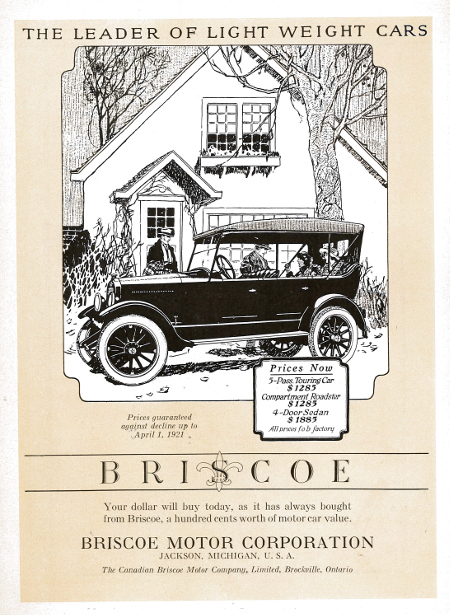 An ad for the Briscoe five-passenger touring car
An ad for the Briscoe five-passenger touring car
By 1921, the Briscoe automobile offered the consumer many new and improved features, including a wonderful satin-like lustrous paint finish, a plate glass window in the rear, and a very stylish moto meter on the radiator cap which many consumers found very stylish. The sedan models offered rain moldings and sun visors. Pricing was a factor for Briscoe when in comparison with other automakers. The touring model was advertised in 1917 for $935, while a popular Ford Center Door sedan cost $645.
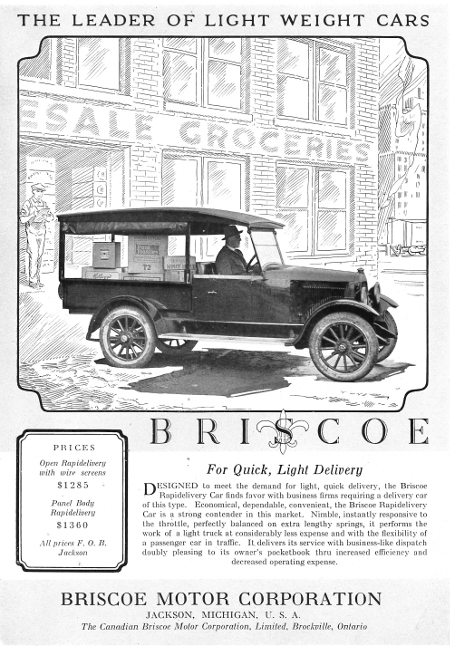 An ad for the Briscoe Rapidelivery car
An ad for the Briscoe Rapidelivery car
The Briscoe Motor Company also offered a very attractive Rapidelivery car which many consumers really liked. The Rapidelivery car was world famous and renowned for its economy and power. The same sturdy chassis of the Briscoe touring car was also used for the Rapidelivery Car. The electric lights enabled the driver to make night deliveries when necessary. The model was a light dependable delivery vehicle that was used for fast delivery by many businesses. The closed or panel body offered the consumer the same chassis and powerful motor as the passenger cars. The body was high and manufactured with one piece panels of Vehisote, which was water-proof and more durable than wood. Today, they are considered very rare.
By late 1921, Briscoe decided he had enough of the automotive manufacturing life style and decided to hand his company's presidency over to Clarence A. Earl, who later sold off the remaining parts to pursue other endeavors.
Bibliography
Szudarek, Robert G. “How Detroit Became the Automotive Capital 100th Anniversary.” 1996.
Briscoe Meter Volume III No. 9 September 1920.
Kimes, Beverly Rae & Clark Jr., Henry Austin. “Standard Catalog of American Cars: 1805-1942.”


